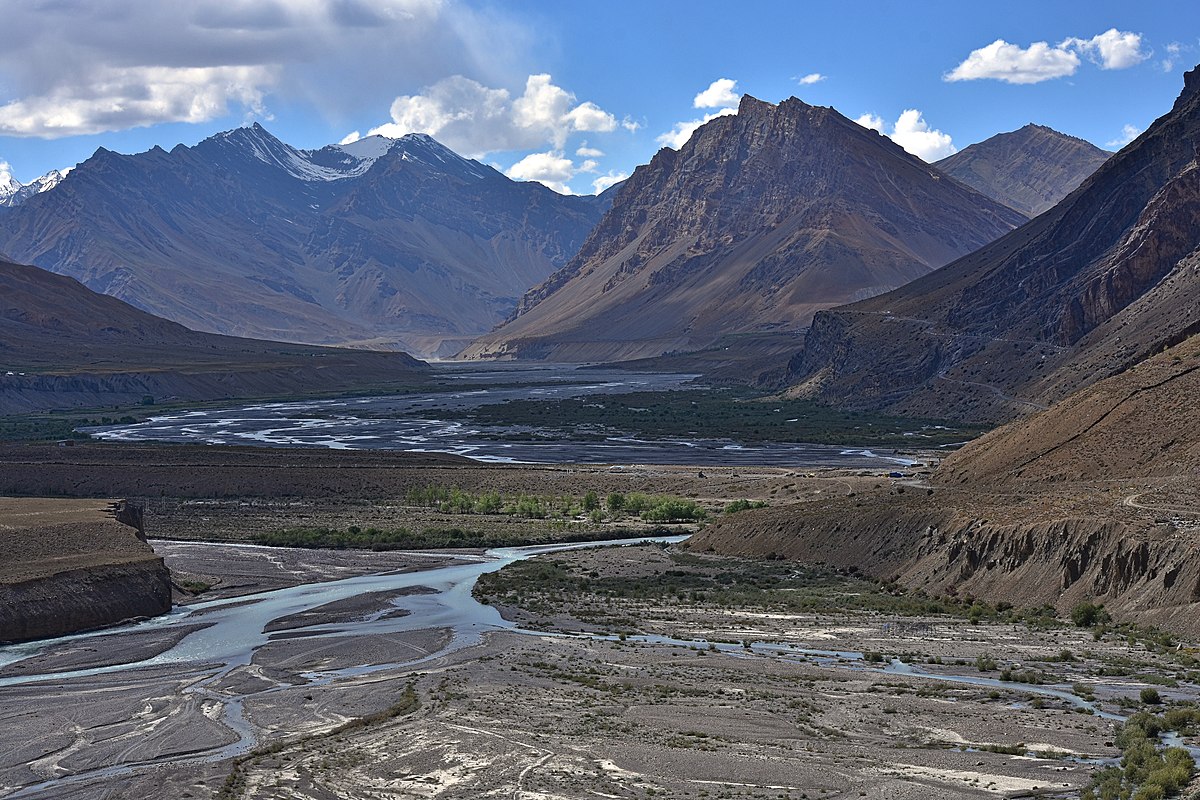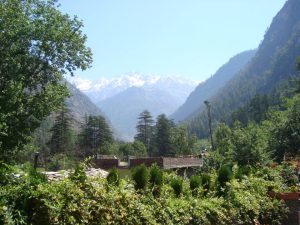Tirthan Valley: A Hidden Gem in Himachal Pradesh Tirthan Valley, a pristine and lesser-known hill station in Himachal Pradesh, is […]

Spiti Valley: A Majestic Hill Station in Himachal Pradesh
Spiti Valley, a high-altitude desert mountain valley located in the northern region of Himachal Pradesh, is one of the most captivating destinations in India. Often referred to as the “Little Tibet,” Spiti Valley is renowned for its stark landscapes, ancient monasteries, and rich cultural heritage. Situated at an average altitude of about 3,800 meters (12,500 feet) above sea level, this remote valley offers a unique blend of rugged terrain, picturesque beauty, and spiritual tranquility.
Attractions and Natural Beauty
Breathtaking Landscapes: Spiti Valley is characterized by its dramatic landscapes, including snow-capped peaks, vast arid plains, and deep gorges. The valley’s unique terrain, with its barren mountains and colorful rock formations, provides stunning vistas that are perfect for photography and nature appreciation. The high-altitude desert environment, combined with the clear blue skies, makes Spiti an ideal destination for those seeking solitude and a connection with nature.
Key Monasteries: Spiti Valley is home to several ancient monasteries that reflect its rich Tibetan Buddhist heritage. Among the most notable are:
- Key Monastery: Located at an altitude of about 4,166 meters (13,665 feet), Key Monastery is one of the most important and oldest monasteries in the valley. It features intricate frescoes, ancient scriptures, and a serene ambiance that attracts spiritual seekers and tourists alike. The monastery offers panoramic views of the surrounding mountains and is a central hub of Buddhist culture in Spiti.
- Tabo Monastery: Often referred to as the “Ajanta of the Himalayas,” Tabo Monastery is renowned for its ancient murals and statues. Established in the 10th century, it is one of the oldest and most revered monasteries in the region. The monastery’s architecture and art provide insights into the historical and cultural evolution of Tibetan Buddhism.
- Dhankar Monastery: Perched on a cliff overlooking the confluence of the Spiti and Pin rivers, Dhankar Monastery is a fascinating site known for its dramatic location and historical significance. The monastery’s ancient structures and scenic backdrop make it a must-visit destination for travelers exploring Spiti.
Chandra Tal Lake: Known as the “Moon Lake,” Chandra Tal is a high-altitude lake located at an altitude of about 4,300 meters (14,100 feet). The lake’s pristine blue waters and crescent shape are surrounded by rugged mountains, creating a mesmerizing and tranquil setting. It is a popular spot for camping and trekking and offers stunning views of the surrounding landscapes.
Kibber Village: At an elevation of about 4,270 meters (14,000 feet), Kibber is one of the highest inhabited villages in the world. The village is known for its traditional architecture, vibrant culture, and stunning views of the snow-capped peaks. It serves as a base for exploring nearby attractions and offers a glimpse into the traditional lifestyle of the Spiti people.
Pin Valley National Park: Situated in the Pin Valley, this national park is known for its unique flora and fauna. The park’s high-altitude environment provides a habitat for various wildlife species, including snow leopards, blue sheep, and Himalayan ibex. It is a great destination for wildlife enthusiasts and trekkers.
How to Reach Spiti Valley
Reaching Spiti Valley involves traversing some of the most challenging and scenic roads in India. The valley is accessible by road, with the journey offering breathtaking views of the Himalayan landscape.
By Air: The nearest airport to Spiti Valley is in Kullu (Bhuntar Airport), located about 245 kilometers (152 miles) away. Kullu Airport is connected to major cities like Delhi and Chandigarh. From Kullu, visitors can hire a taxi or take a bus to reach Spiti Valley. The journey from Kullu to Spiti is a scenic drive that passes through rugged terrain and high mountain passes.
By Train: The nearest major railway station to Spiti Valley is in Shimla, approximately 250 kilometers (155 miles) away. Shimla Railway Station is well-connected to major cities like Delhi and Chandigarh. From Shimla, visitors can hire a taxi or take a bus to Spiti Valley. The drive from Shimla to Spiti involves navigating through high mountain passes and offers stunning views of the Himalayas.
By Road: Spiti Valley is primarily accessible by road, with two main routes:
- Via Manali: The route from Manali to Spiti is one of the most popular and adventurous ways to reach the valley. It involves crossing the Rohtang Pass and the Kunzum Pass, both of which are high-altitude mountain passes. The road from Manali to Spiti offers spectacular views of the Himalayan landscape and is a thrilling experience for travelers. The journey takes about 8 to 10 hours, depending on road conditions and weather.
- Via Shimla: The route from Shimla to Spiti is another option, passing through the scenic towns of Sarahan, Rampur, and Kaza. This route is generally considered more stable and accessible throughout the year compared to the Manali route. The drive from Shimla to Spiti takes about 10 to 12 hours and offers a different perspective of the region’s landscapes.
Accommodation and Dining
Spiti Valley offers a range of accommodation options, from luxury hotels and guesthouses to budget lodges and homestays. Many of the accommodations in the valley provide stunning views of the surrounding mountains and offer a comfortable stay amidst the remote environment.
Dining options in Spiti Valley are limited, with local eateries serving traditional Tibetan and Himachali cuisine. Visitors can enjoy dishes like “thukpa” (noodle soup), “momos” (dumplings), and “tsampa” (roasted barley flour) at local restaurants and homestays.
Conclusion
Spiti Valley, with its breathtaking landscapes, rich cultural heritage, and serene environment, offers a unique and enriching experience for travelers. Its accessibility, combined with its range of attractions and natural beauty, makes it a perfect destination for those seeking an adventure and a deeper connection with the Himalayan region. Whether you’re exploring ancient monasteries, trekking through rugged terrain, or simply soaking in the stunning views, Spiti Valley provides a memorable and unforgettable getaway in Himachal Pradesh.





